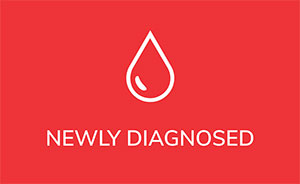The Bottom Line:
Warm autoimmune hemolytic anemia is a common and serious complication of chronic lymphocytic leukemia (CLL) and small lymphocytic lymphoma (SLL). The ENERGY study will test the efficacy of nipocalimab for treating wAIHA.
Who Performed the Research and Where Was it Presented:
Dr. Irina Murakhovskaya from Albert Einstein College of Medicine and colleagues presented this clinical trial’s rationale and study design at the American Society for Hematology (ASH) Annual Meeting in 2022.
Background:
In this interview, Dr. Brian Koffman interviewed Dr. Irina Murakhovskaya, a hematologist at Albert Einstein College of Medicine, about wAIHA and a new therapy they will be testing to treat it.
Patients with CLL / SLL are no strangers to immune dysfunction since they have immune system cancers. However, even though their immune systems aren’t very good at fighting infections, the system can turn and start attacking the body itself.
Autoimmune complications occur when your immune system turns against you and creates antibodies against certain body parts. For example, patients with CLL / SLL can develop autoimmune hemolytic anemia, where the immune system makes antibodies against red blood cells and destroys them. This leads to anemia. Autoimmune hemolytic anemia is CLL’s most common autoimmune complication, affecting 5-30% of patients. It can happen early, sometimes even before patients know they have CLL.
There are two types of autoimmune hemolytic anemia, warm and cold, which are distinguished by the antibody produced. In warm autoimmune hemolytic anemia, IgG attaches to red blood cells at warm temperatures (i.e., normal body temperature), and the spleen recognizes the IgG and destroys the red blood cells. In cold autoimmune hemolytic anemia, IgM attaches to red blood cells at cold temperatures along with something called complement. As the red blood cell moves closer to the heart and warms up, IgM falls off and leaves complement on the surface of the red blood cell. Complement destroys the red blood cell.
There are currently no FDA-approved therapies specifically for warm autoimmune hemolytic anemia. The treatments used are based on historical information that these drugs suppress the immune system, which is the basis for treating autoimmune hemolytic anemia. Steroids are a first-line treatment that is very immunosuppressive, requires prolonged treatment, and has many side effects. Most patients with CLL eventually relapse after steroid treatment, so another treatment that can be used is rituximab, which targets the B cells that produce the pathogenic antibodies. Like steroids, rituximab is very immunosuppressive and increases the risk of infection. Dr. Murakhovskaya and colleagues will test a new therapy for treating warm autoimmune hemolytic anemia called nipocalimab.
Most IgG antibodies in the body are recycled through the FcRn receptor. Nipocalimab is a monoclonal antibody that blocks the FcRn receptor, preventing the recycling of IgG antibodies (both the pathogenic and the normal kind). Therefore, it is not as immunosuppressive as other therapies, such as steroids or rituximab, because the body would still be able to produce antibodies normally, including IgM and IgA.
Methods and Participants:
- The ENERGY study is an ongoing, phase 2/3 multicenter, randomized, double-blind, placebo-controlled study that will evaluate the efficacy, safety, tolerability, pharmacokinetics, and pharmacodynamics of nipocalimab compared with placebo in patients with warm autoimmune hemolytic anemia.
- The study will enroll patients diagnosed with warm autoimmune hemolytic anemia (including patients with CLL / SLL) at least three months prior and who have become resistant to at least one previous treatment.
- Patients will receive either: 1) nipocalimab every two weeks, 2) nipocalimab every four weeks, or 3) placebo every two weeks. All doses with be given via intravenous injection.
- If you are interested in participating, more information can be found here.
Conclusions:
Warm autoimmune hemolytic anemia is a common and serious complication of CLL / SLL. The ENERGY study will test the efficacy of nipocalimab for treating this condition. If it is effective, nipocalimab will provide a less immunosuppressive treatment option for warm autoimmune hemolytic anemia.
Links and Resources:
Watch the interview on the abstract here:
You can read the actual ASH abstract here: Energy Trial in Warm Autoimmune Hemolytic Anemia (wAIHA): Design of a Phase 2/3 Randomized, Double-Blind, Placebo-Controlled Study to Assess the Efficacy and Safety of Nipocalimab, an FcRn Blocker
Take care of yourself first.
Ann Liu, PhD



